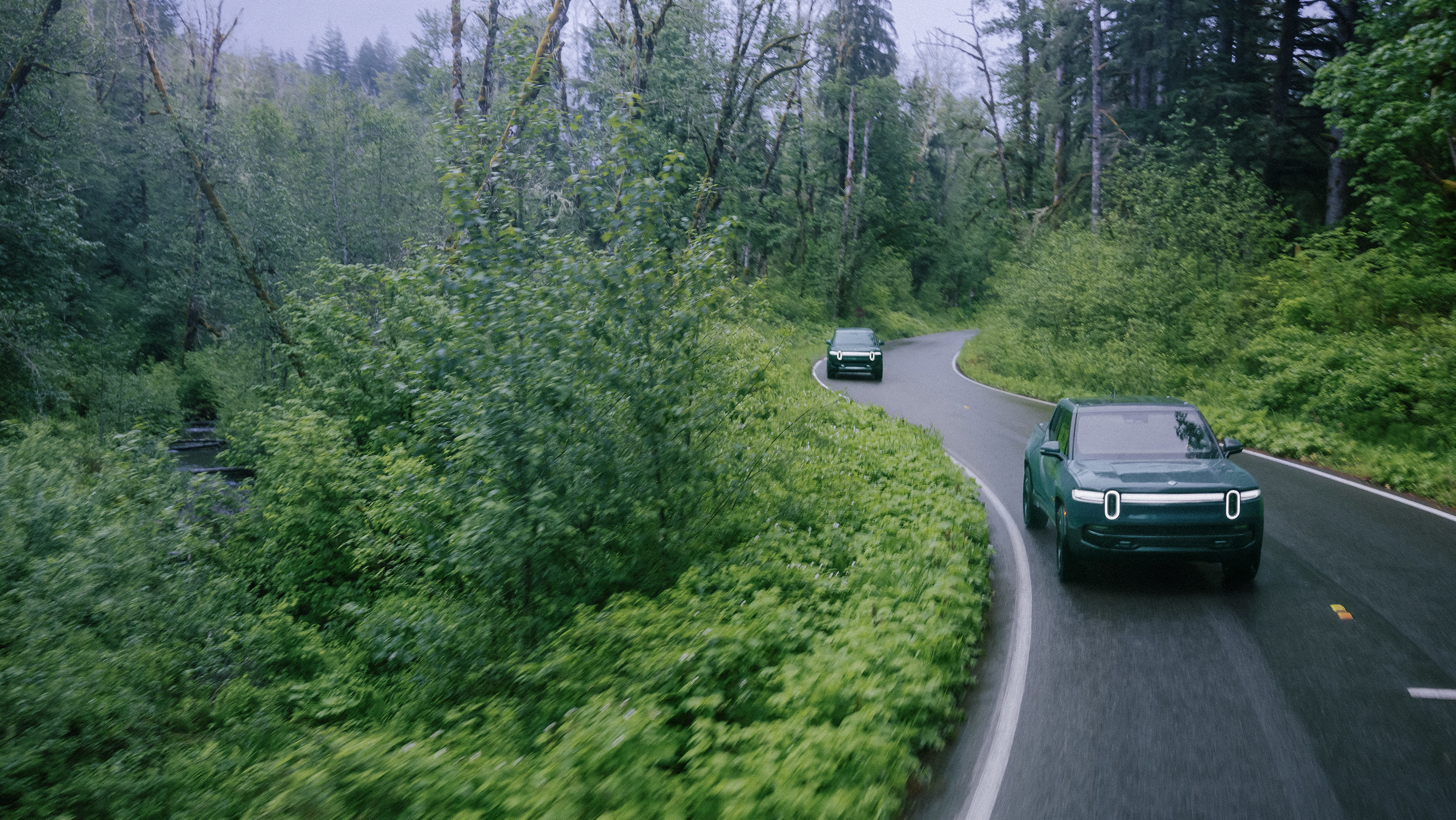
Rivian has updated and enhanced its debut model, the might R1 EV. Founded way back in 2009, Rivian pivoted this way and that before eventually settling on a solid strategy as a maker of all-electric SUVs and pick-up trucks, two market sectors that were at that point soundly overlooked by the first generation of EV manufacturers.
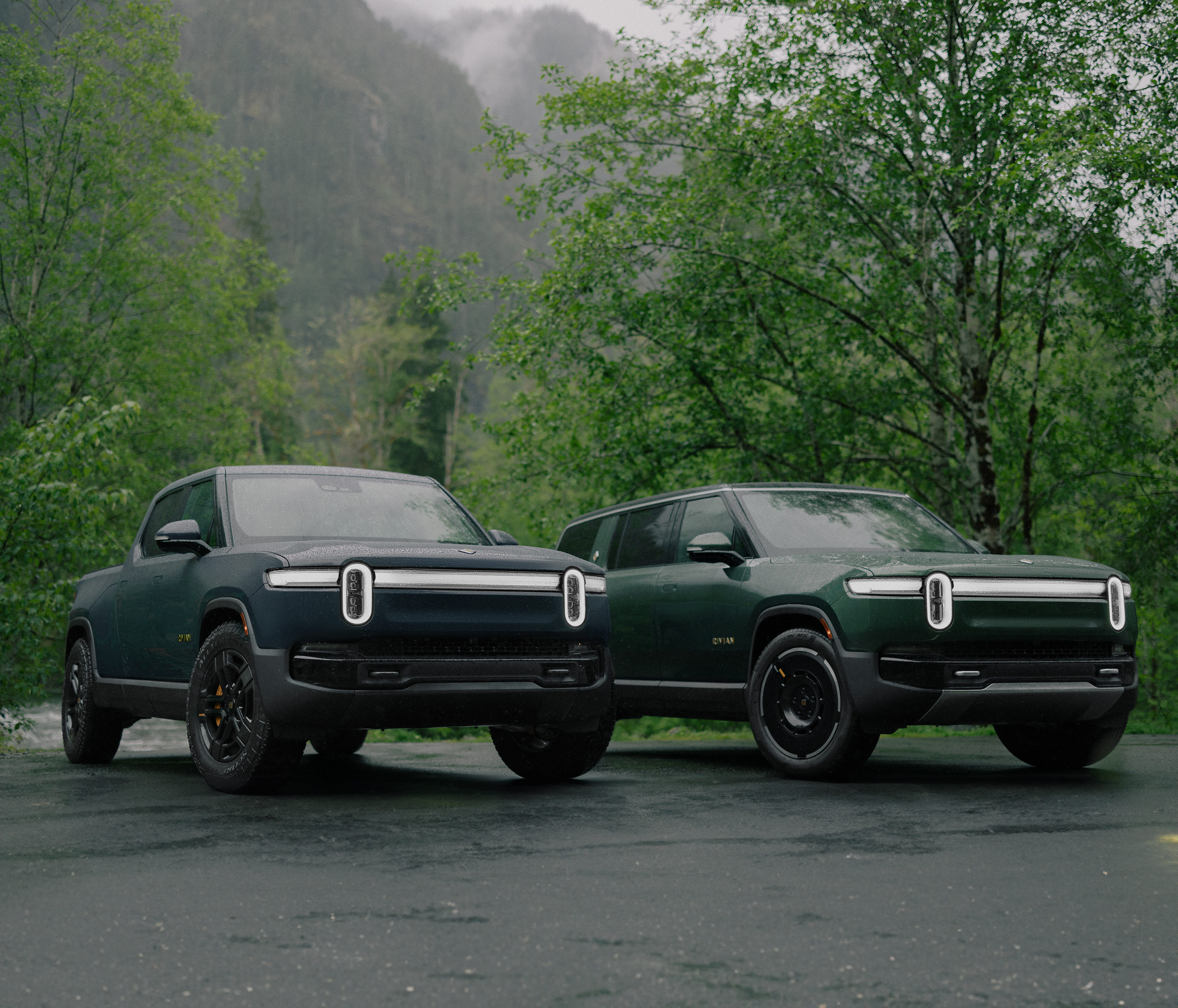
Those products, the R1S 7-seater SUV and R1T pick-up, were revealed in December 2017 and finally found their way to customers in late 2021. It was a tricky time to seed an innovative all-electric car range, with pandemic and conflict-driven supply shortages ramping up costs and delays. A side gig building out Amazon’s EDV (Electric Delivery Van) fleet has helped, as did the news of two smaller upcoming models, the Rivian R2 and R3.
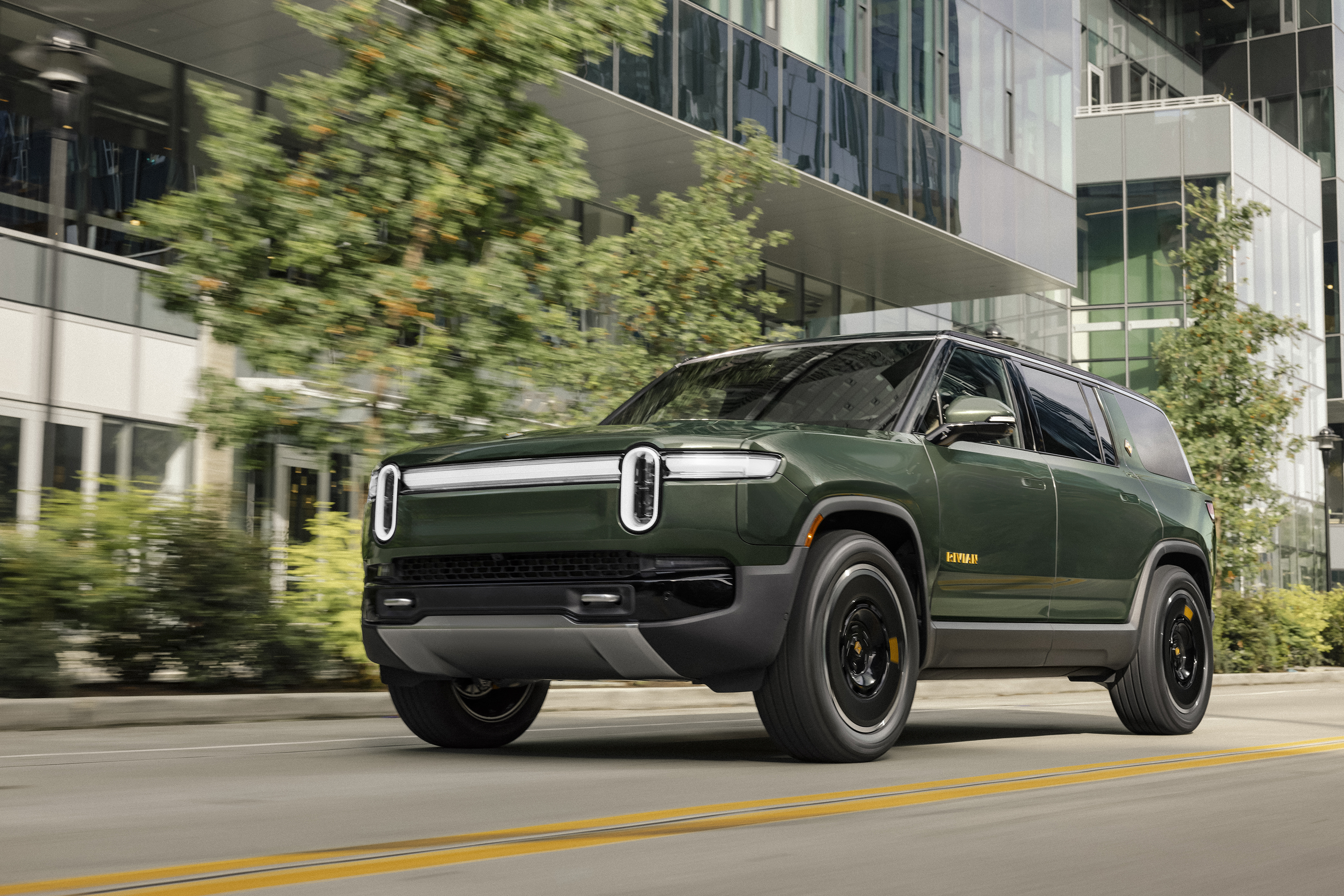
To bolster all this activity, the R1 is getting an update. Wallpaper* spoke to Rivian’s Chief Design Officer, Jeff Hammoud, about the changes and challenges of giving an instantly iconic vehicle a subtle but meaningful overhaul. ‘You have to let the customer see change and make it tangible,’ Hammoud acknowledges, but he cautions against the need for any overwhelming change. In the case of the R1 range, the existing building blocks are pretty solid.
On the exterior, the biggest changes are to the style and functionality of the lighting. Rivian’s signature vertical lozenge-like headlights now incorporate an Adaptive Drive Beam system, as well as new RGB LEDs in the horizontal light bar that add a new layer of functionality.
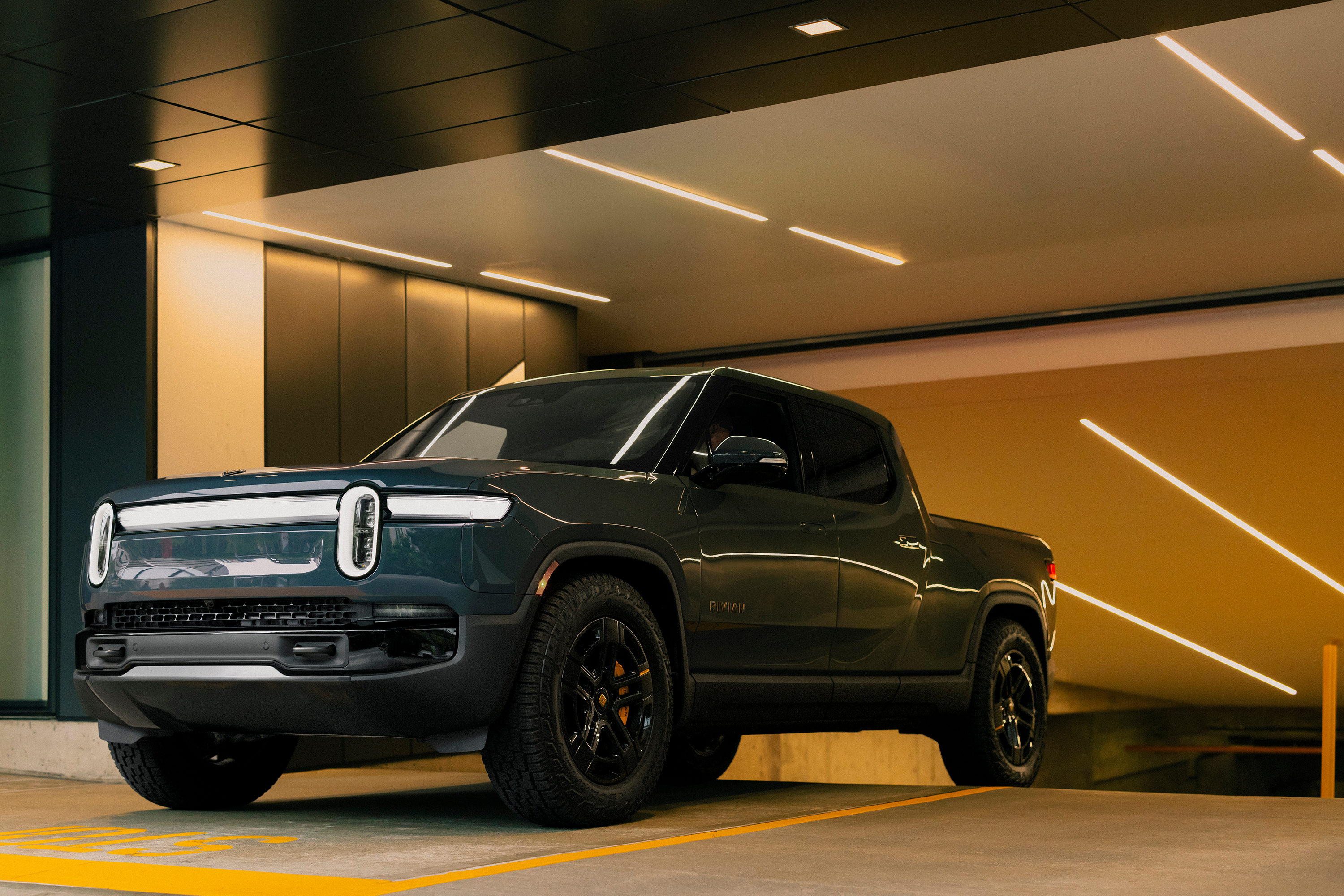
There’s a lot going on under the skin, with a substantial overhaul to the look and feel of the infotainment system, new materials and trim parts, and revisions and updates to the R1’s performance capabilities. ‘The look and feel of the software certainly influenced the hardware,’ Hammoud says, ‘especially elements like the headlights and light bar.’ New Gen2 architecture gives the car much more processing power, allowing the sensors to work harder and smarter on things like blind spot monitoring.
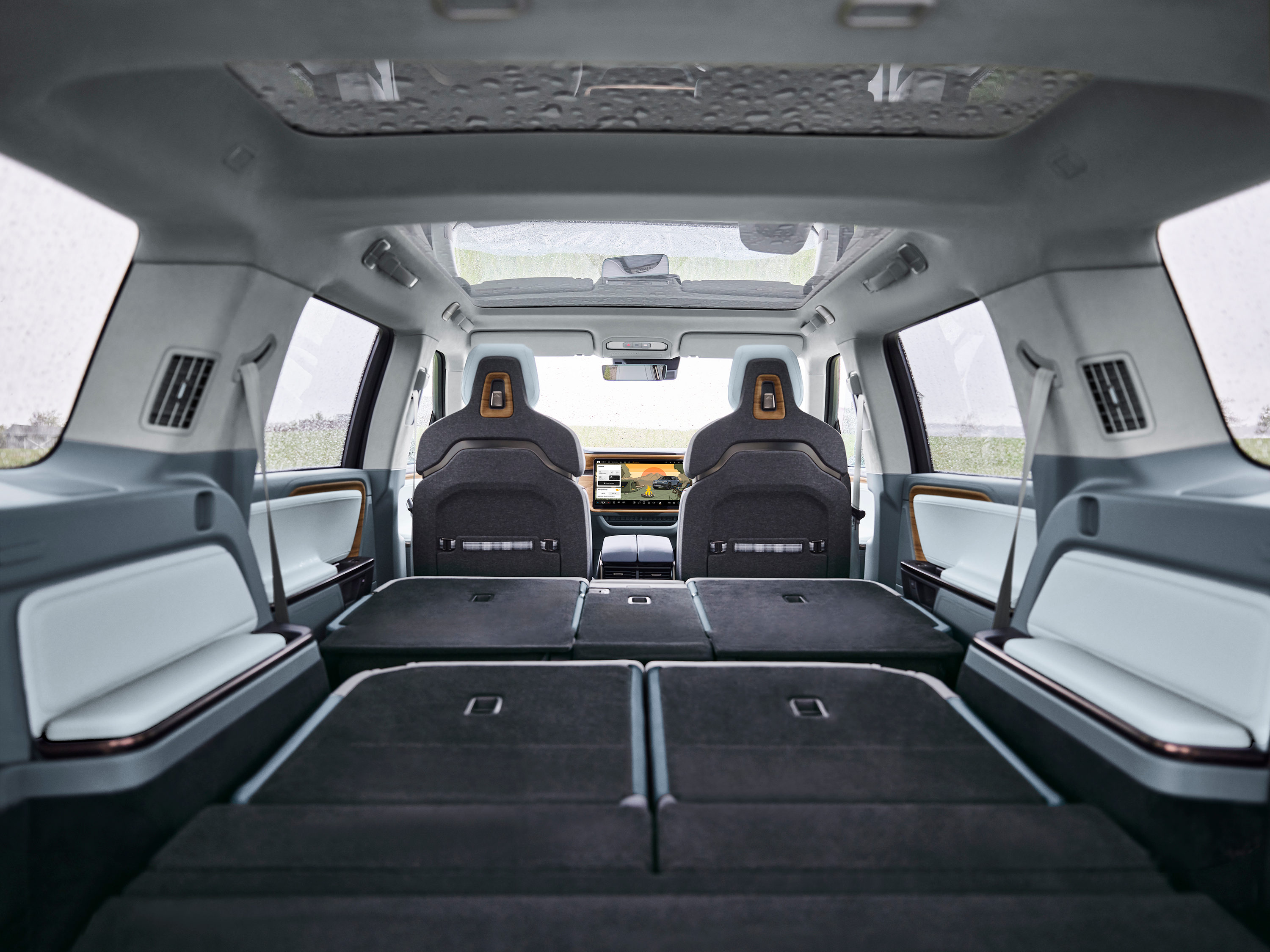
‘Our vehicle is software-defined,’ says Hammoud, ‘it’s really only us and Tesla who can make these big changes through software, so we really want to leverage that.’ Rivian spends a lot of time exploring what customers do and don’t like, including scouring message boards and groups on sites like Reddit to see what people are saying. ‘Every manufacturer is trying to push towards this, I think,’ he adds, ‘because you have smaller components, less wiring, OTA (over-the-air) updates – it’s very freeing as a designer.’
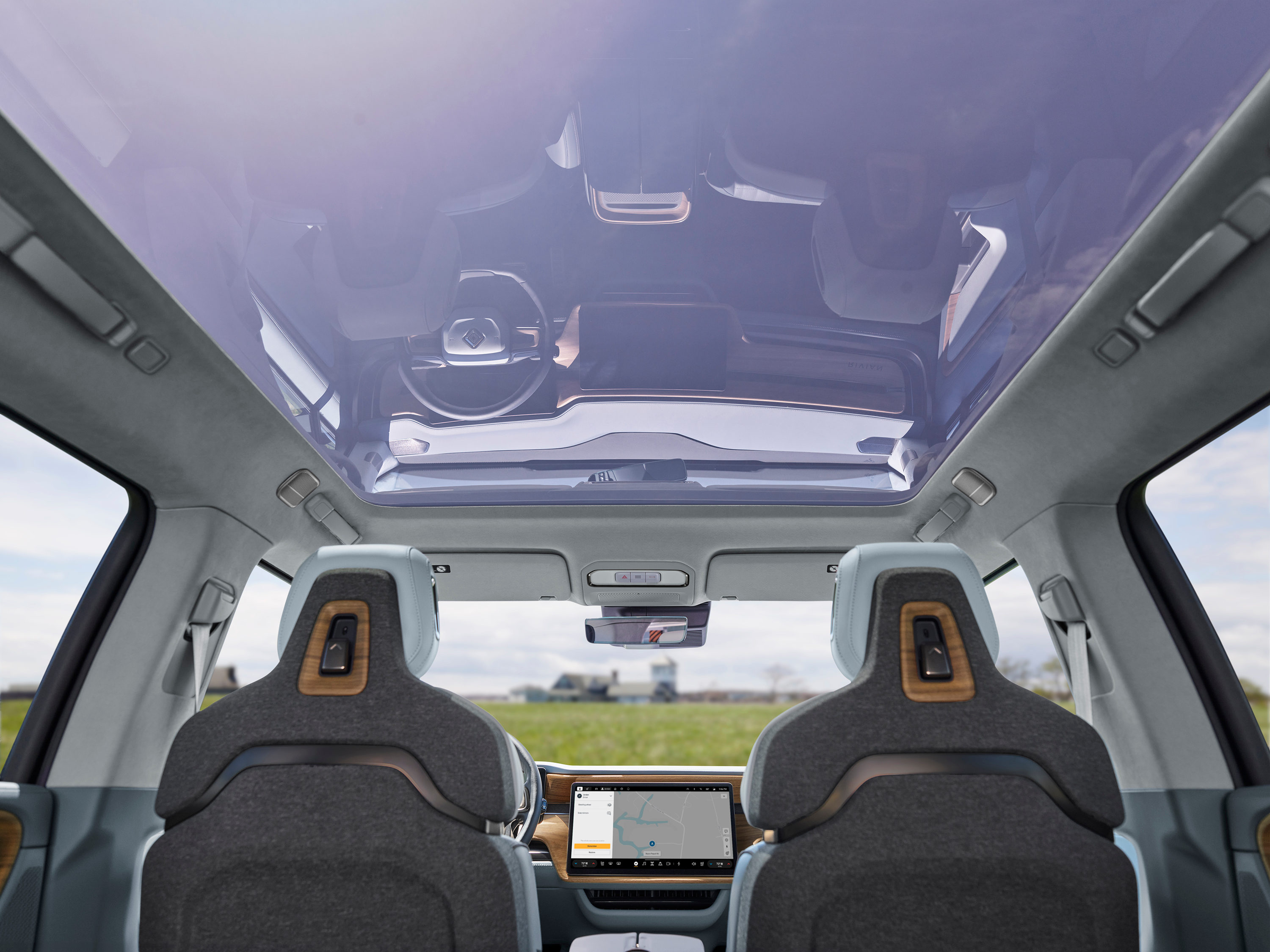
In either guise, R1 already has a reputation as a performer, both on road and off. Second generation cars will receive Rivian’s new drive unit in either Tri- or Quad-motor configurations, alongside the existing Dual-Motor option. No-one is especially wowed by the numbers that a big, heavy electric SUV can achieve any more, but for the record, the high-performance Quad-Motor has the equivalent of 1,025 horsepower and can shunt the R1T pick-up to 60mph in less than 2.5 seconds. Remember to secure any heavy loads.
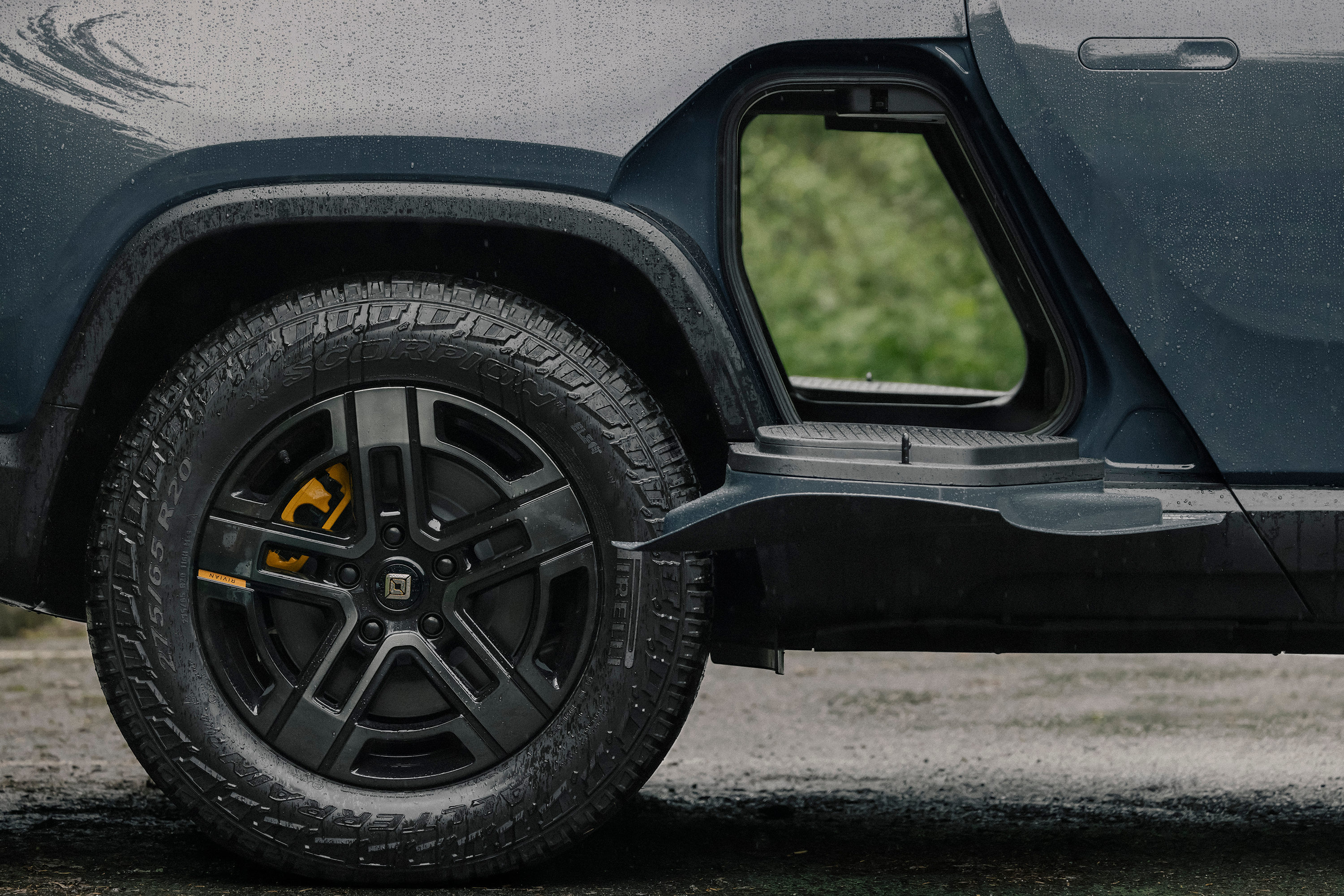
Big batteries and better energy management gives a projected 400+ mile range in the most abstemious drive mode on the most efficient model (real world experiences may vary substantially), with three different battery sizes on offer. At their core, these big Rivian trucks offer a huge amount of functionality for their target market, outdoorsy Californians who like to switch between highway and trail.
That core functionality and form is also why updates like this can be so successful. ‘You need to have the right hardware from the outset,’ Hammoud points out. ‘It takes four years to get a vehicle to market, but through software updates you can iterate things really quickly.’
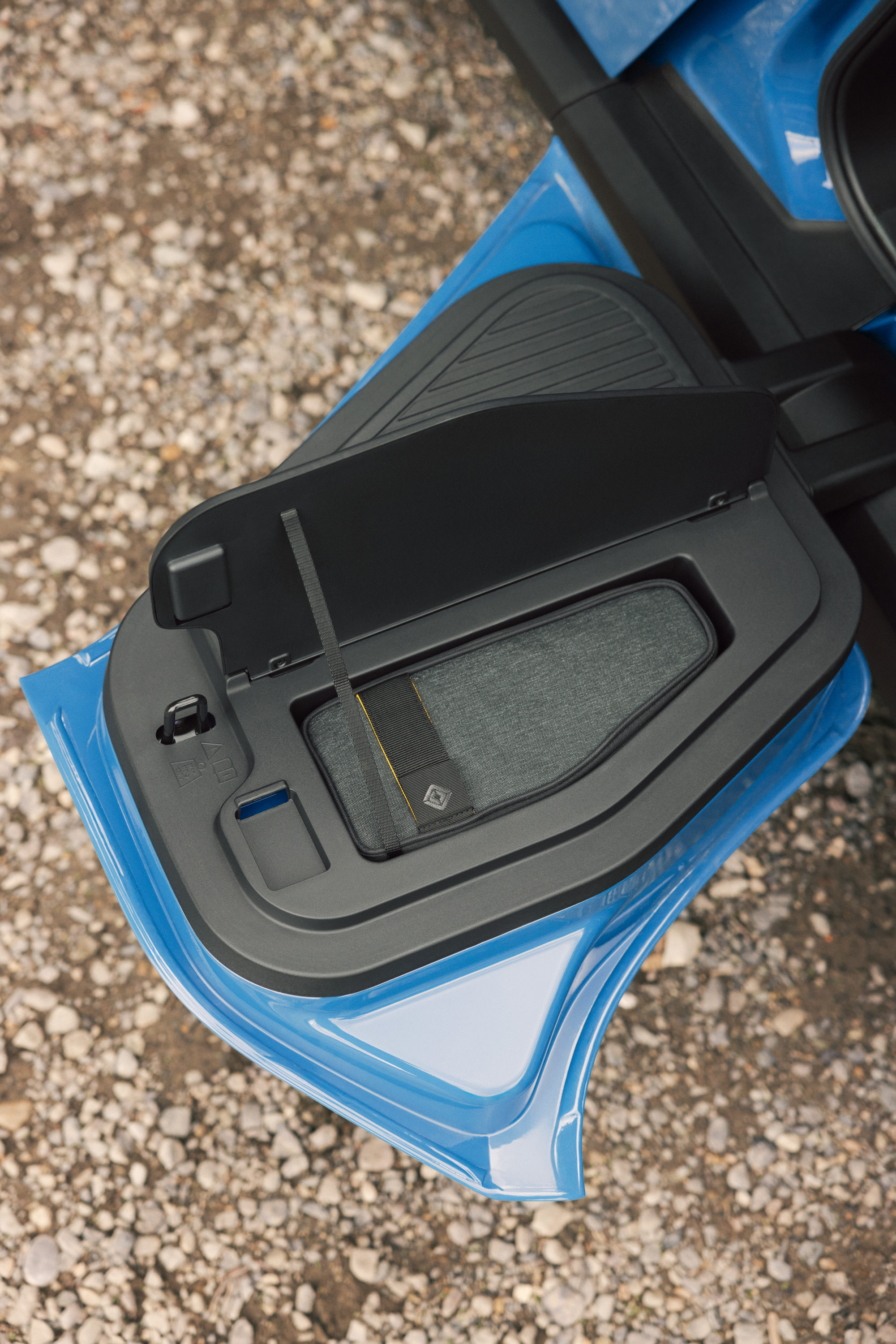
One area where the design team has had a major impact is on the graphic style of the main screen. Change the drive mode and you’ll see beautifully stylised cel-shaded animations that signal the different options, from All-Purpose to the energy-efficient Conserve mode, as well as Sport and Snow. ‘We don’t like to take ourselves too seriously,’ says Hammoud, ‘and these show the car in a really unique way. It’s joyful utility.’
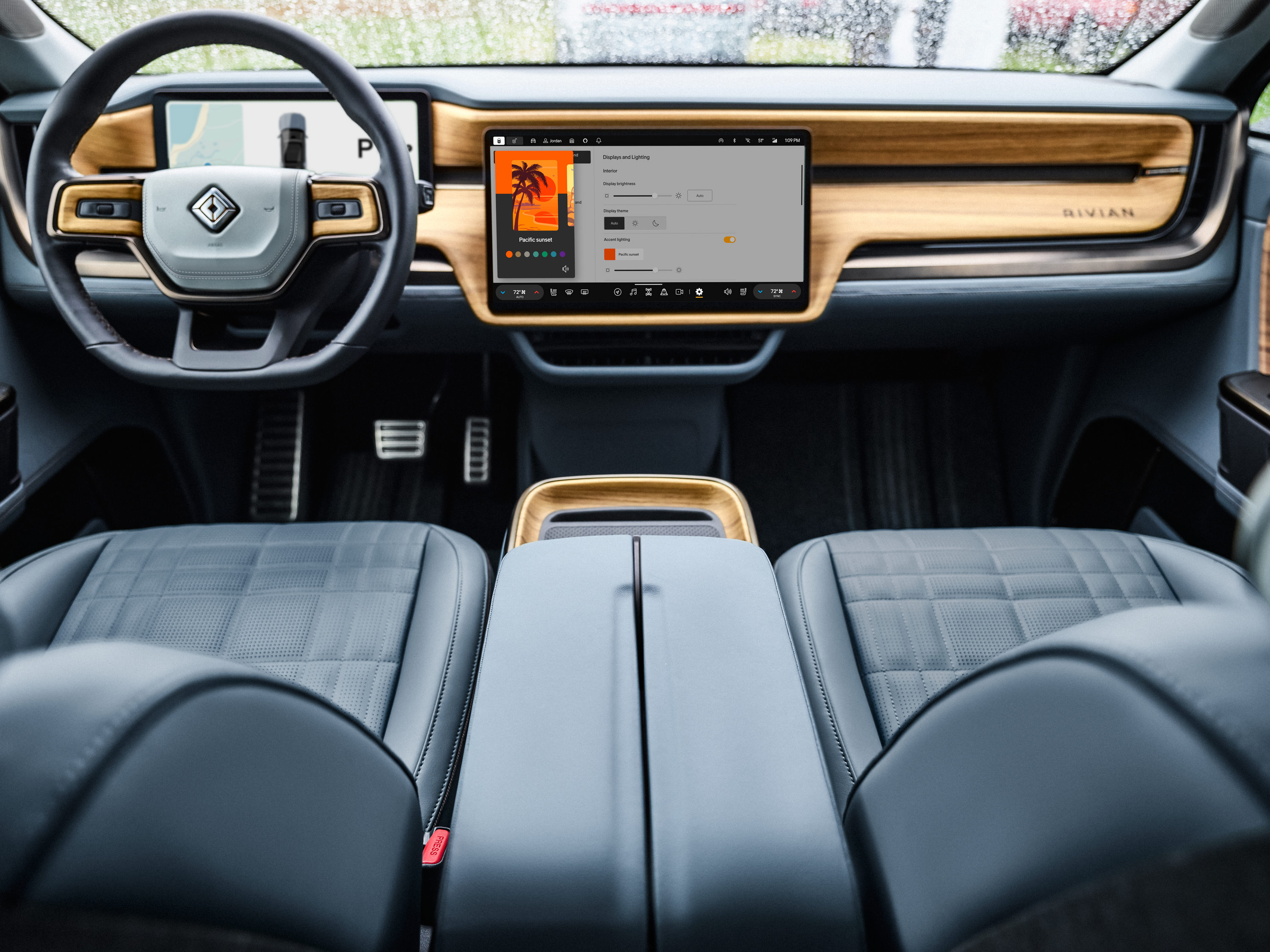
Other updates include optional Dolby Atmos with the Premium Audio specification, as well as keyless entry technology that can be added to your Apple Wallet or some Google Pixel phones. Other elements will come with time, including more and more autonomous driving features. These will utilize the 11 cameras and five radar systems and dedicated NVIDIA chips that have been baked in from the outset, but it’s not quite as simple as throwing a switch. Even so, Rivian is better placed than many to take advantage of what happens once social and legal barriers come down.
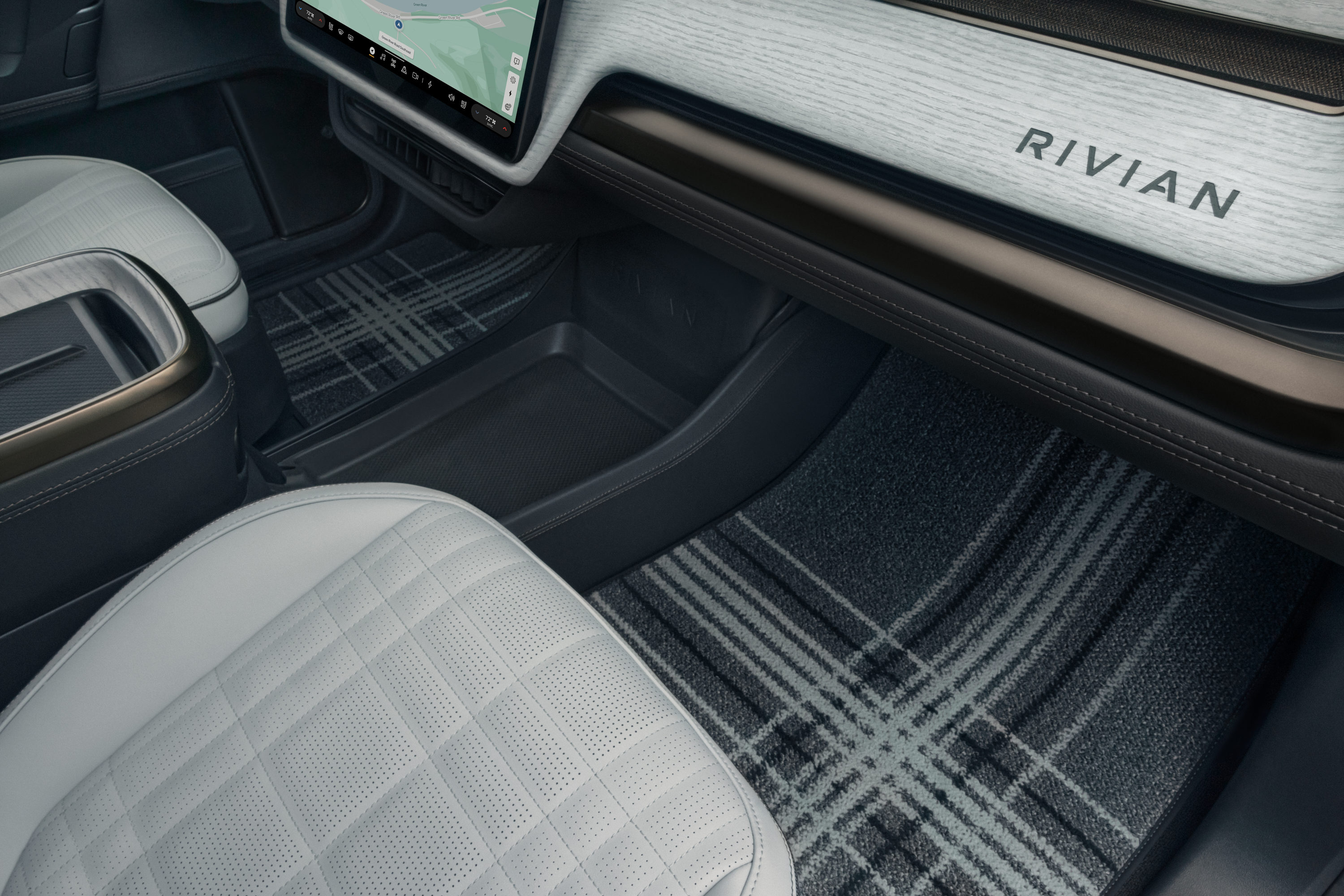
Under the skin, there’s enhanced and reengineered suspension (slightly smoother, as per customer feedback), and new wheels and tyres, whilst the revamped onboard computing set-up has allowed the company to simplify everything: 1.6 miles of wiring has been stripped out. ‘Our brand ethos is to be really intuitive,’ Hammoud says, ‘our customers also expect a certain amount of technology and well as engagement.’
Simplicity is still the watchword. Hammoud is especially proud of elements like the roof bars, which can be installed and removed by a single person with no tools. And while a pick-up truck will always signify a certain level of raw functionality, new interior trims and materials have elevated the experience substantially. These include exposed maple wood, brown stitching, accents of plaid textiles and ‘burnished bronze’ switchgear. ‘It’s like a sports coat with an elaborate liner,’ says Hammoud.
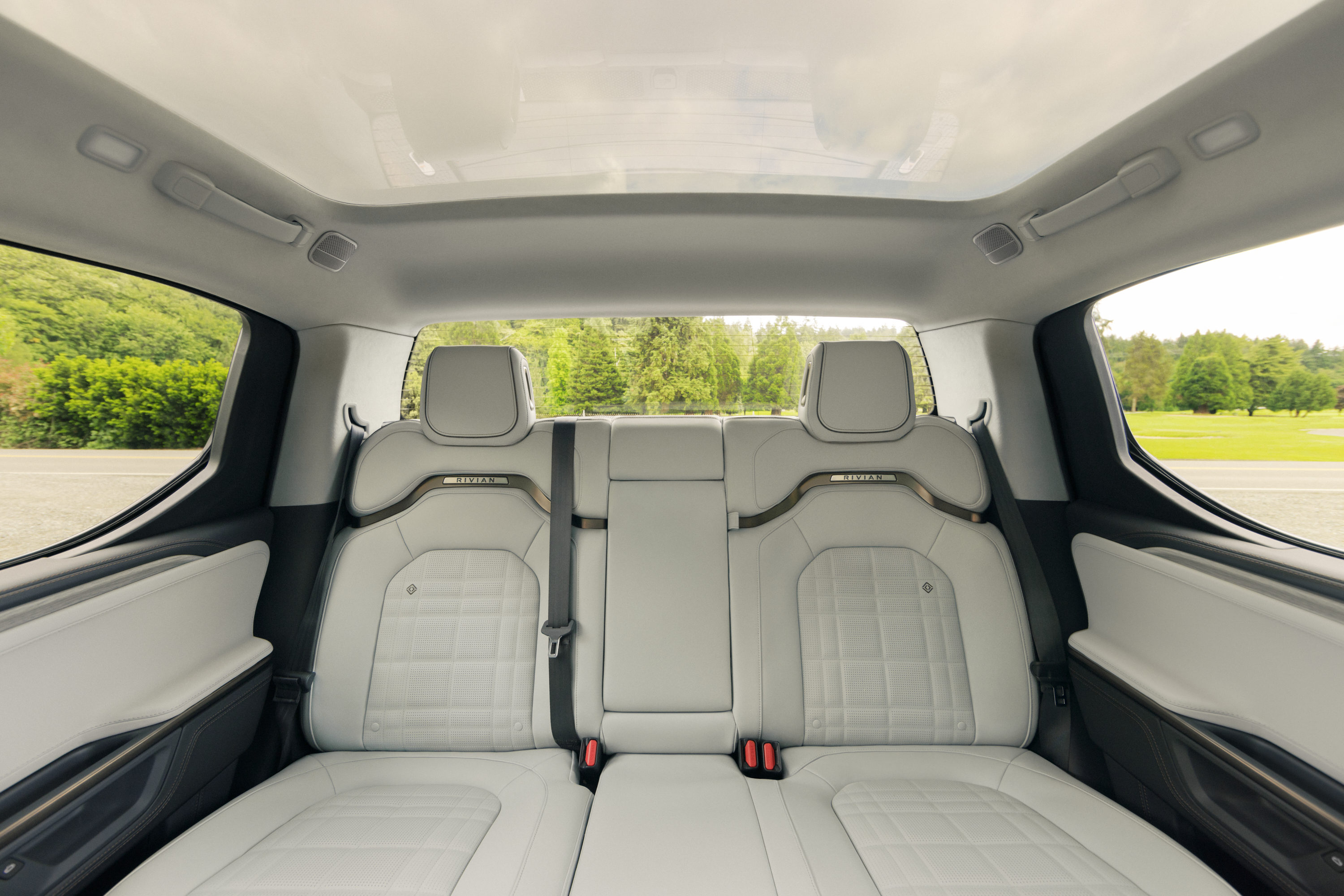
Finally, there’s the opportunities created by the new lighting. ‘We spent a lot of time on the exterior lighting,’ the designer says, ‘and we can really change the user experience as a result. For example, you can see the state of charge on the horizontal light band, and we can do things like create emergency lighting systems to highlight hazards.’ This design-driven blend of innovation and experimentation continues to give Rivian an edge over its competitors and keeps the R1 high on our list of desirable EVs.

Rivian R1S Second Generation, from $75,900, Rivian R1T Second Generation, from $69,900, Rivian.com, @RivianOfficial







